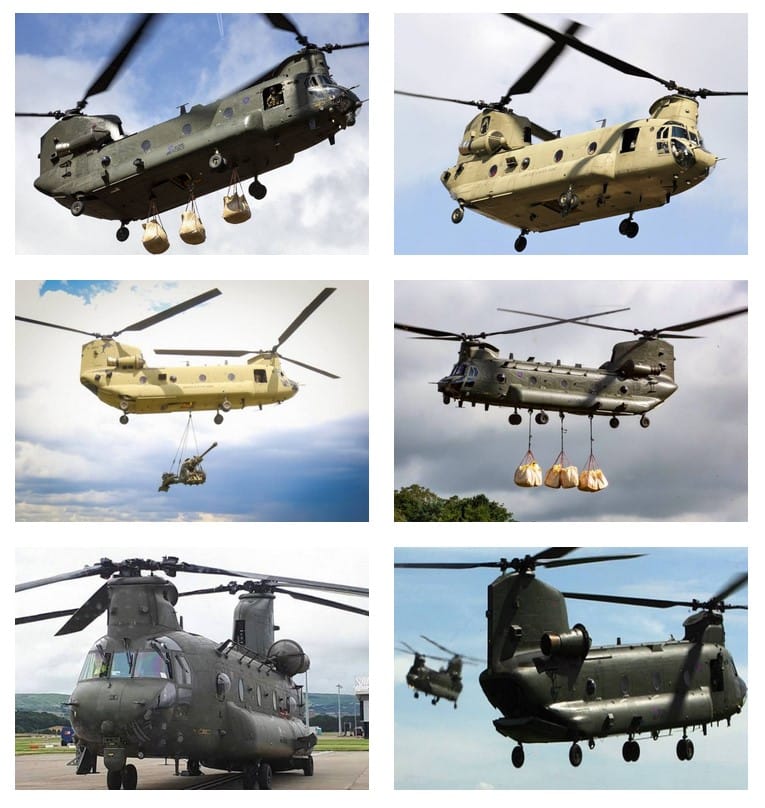The first fully equipped Army Chinook, designated the CH-47A, entered service in August 1962 with a gross weight of 33,000 pounds (14,969 kilograms). Boeing introduced the CH-47B in 1966 with an improved airframe and power plant provided by the T55-l-7C engines. The gross weight rose to 40,000 pounds (18,144 kilograms). The CH-47C was developed in 1967 in response to the Army’s request for transporting a 15,000-pound (6804-kilogram) payload a distance of 30 nautical miles (56 kilometers) on a 95-degree Fahrenheit (35-degree Celsius) day at 4,000 feet (1219 meters). It was powered by T55-l-11 engines and had a gross weight capability of 46,000 pounds (20,865 kilograms).
Chinooks were first used in combat in 1965 during the Vietnam conflict. During the last days of the war, one Chinook is reported to have carried 147 refugees in a single lift. CH-47A, B and C models served with until the war’s end in 1975.
After the Vietnam War, Boeing and the Army began a major fleet upgrade that led to development of the CH-47D. Almost 500 early model Chinooks went through an extensive modernization process in Philadelphia that produced an essentially new H-47 fleet. The CH-47D Chinook was a central element in U.S. Army operations in the Persian Gulf War. Versions of the D model were also used for export including the “International Chinook” and the SD “Super D,” in all 20 nations have operated various models of the H-47.



